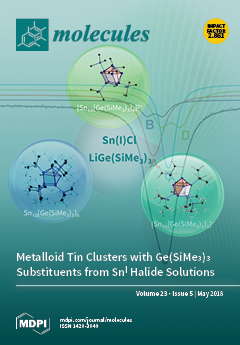1
Institute of Pharmacy/Pharmacognosy and Center for Molecular Biosciences Innsbruck (CMBI), University of Innsbruck, 6020 Innsbruck, Austria
2
Department of Pharmacognosy and Natural Products Chemistry, Faculty of Pharmacy, National and Kapodistrian University of Athens, 15771 Athens, Greece
3
Department of New Business Development, Galenica SA, 14564 Kiffisia, Greece
4
Laboratory of Organic Chemistry, Natural Substances Team, Faculty of Sciences of Sfax, University of Sfax, PB 1171, 3000 Sfax, Tunisia
5
Department of Research and Development, VivaCell Biotechnology GmbH, 79211 Denzlingen, Germany
6
Natural Products and Food Research and Analysis (NatuRA), Department of Pharmaceutical Sciences, University of Antwerp, 2610 Antwerp, Belgium
7
Institute of Biomedical Aging Research and CMBI, University of Innsbruck, 6020 Innsbruck, Austria
8
Department of Chemistry, Catholic University of the North, Casilla, Antofagasta 1280, Chile
9
Department of Analytical Research, Bionorica research GmbH, 6020 Innsbruck, Austria
10
Department of Pharmacognosy, Faculty of Pharmacy, University of Medicine and Pharmacy, Ho Chi Minh City 700000, Vietnam
11
Department of Cell Biology and Biophysics, Faculty of Biology, National and Kapodistrian University of Athens, 15784 Athens, Greece
12
Center for Natural Products in Drug Development, Department of Pharmaceutical Sciences, Tshwane University of Technology, Pretoria 0001, South Africa
13
Phytochemistry and Bioactive Natural Products and Pharmacognosy, School of Pharmaceutical Sciences, EPGL, University of Geneva, University of Lausanne, 1211 Geneva 4, Switzerland
14
Department of Health Science and Technology, Laboratory of Translational Nutrition Biology, Swiss Federal Institute of Technology (ETH) Zürich, 8603 Schwerzenbach, Switzerland
15
Department of Research and Development, Rousselet Centrifugation SA, 07100 Annonay, France
add
Show full affiliation list
remove
Hide full affiliation list






